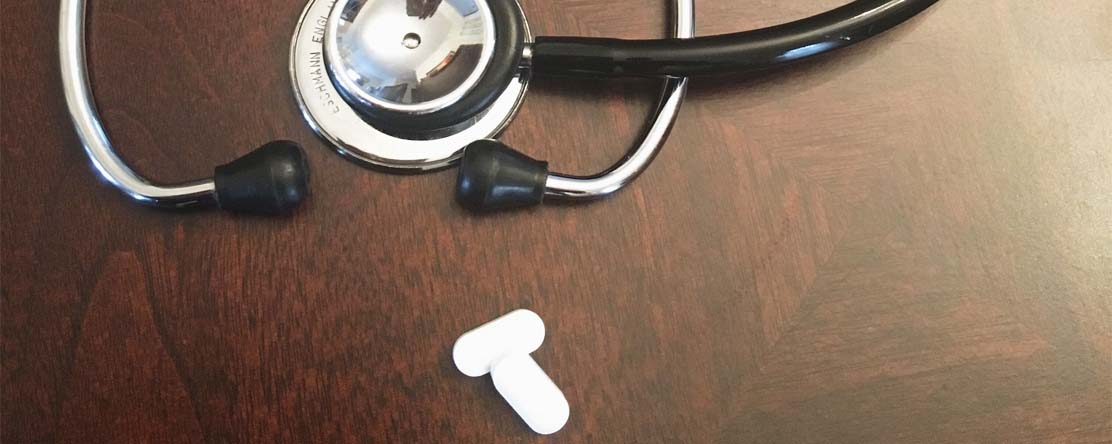
Press Release
This Vulnerable Population is Critical to Preventing the Spread of COVID-19: Addiction Experts Give This Guidance to Health Workers

FOR IMMEDIATE RELEASE
Dr. Snyder says that it’s more important than ever that people are given medication for addiction treatment (MAT) and that health care systems focus on low-barrier care during the COVID-19 pandemic. She outlined key steps for keeping patients with substance use disorders and their providers safe while administering MAT. “Patients shouldn’t be denied care if they present physically, but both buprenorphine starts (a drug commonly used as MAT) and refills should be done remotely whenever possible.” Dr. Snyder pointed out that people who use drugs are some of the most vulnerable populations, with many patients experiencing homelessness, living in shelters, encampments, and housed in close quarters. Additionally, comorbidities (i.e., numerous chronic health conditions) put them at high risk for more severe COVID-19 symptoms, making this patient population more likely to end up in the hospital.
There are serious public health concerns because people who use drugs are also at high risk for transmission while using. “We must encourage patients to use clean drug consumption supplies and use good hygiene. In addition to sterile needles, this includes cleaning pipes and sterilizing any surfaces or objects being used,” Dr. Snyder emphasized. Moreover, people who lose access to their MAT treatment will go into withdrawal and may be physically incapable of following isolation directives thereby increasing the chance of spreading the virus within their very high-risk communities. To support social distancing and prevent withdrawal, Dr. Snyder suggests extending prescriptions “a month-long prescription is preferred” and home delivery of prescriptions whenever possible. Counseling and drug screens should not be prioritized at this time. The vast majority of this care can be provided by phone or telehealth to prevent exposing patients to healthcare environments.
For people who are addicted to drugs or in medical treatment for opioid use disorder common concerns of running out of toilet paper or favorite grocery staples during the shelter-in-place order are trivial. The prospect of running out of their medication is a life and death situation. When medications for opioid use disorder are suddenly stopped, patients go into withdrawal and experience physical and psychological symptoms that many describe as unbearable. “There’s no way you can sit home and endure this. Everything about the way the human brain and body works will prioritize seeking relief whether that means showing up in a crowded ER or finding drugs on the street,” says Serena Clayton, PhD, CA Bridge Program Director.
Another priority is spending minimal time in the health system, and therefore Dr. Snyder urged many patient interactions to be done by phone. Health support staff, such as counselors and substance use navigators, should be able to call the patient’s hospital room and use other telehealth techniques instead of face-to-face interactions. “Using social distancing for patients that have not been exposed to COVID-19 is critical so that people come into the health system more slowly. And if you have a patient that may have COVID-19 and has been placed into quarantine, use as little face-to-face contact as possible,” Dr. Snyder recommends, adding that telehealth regulations are currently being relaxed during this public health emergency.
While quarantine and isolation put people who use drugs at high risk for withdrawal which has potential dangers, this pandemic may also severely impact mental health and the likelihood of overdose. “The current situation is very different from general advice, which is to use with somebody else. In the setting of social distancing, people may be at increased risk of overdose if using alone,” Dr. Snyder says that all people who use drugs or are on MAT should be given naloxone and fentanyl test strips to help prevent overdose. Health care workers should use a harm reduction framework to protect patients, as well as the general population.
It is critical to properly care for high-risk populations but health care workers must also prioritize self-care and safety. “Please take care of yourself as a care provider! You are so important to us and this patient population,” Dr. Snyder reminded health care workers joining the online presentation. She also noted that individuals will need to look into legalities and local health systems/departments for specific regulations. But the situation is rapidly changing and sharing information about COVID-19 in relation to this patient population is urgent which is why the CA Bridge program continues to update best-practices and key steps. Dr. Snyder took many technical questions before signing off. The CA Bridge program staff is available for additional questions via email info@bridgetotreatment.org. More technical recommendations and resources can be found on the website www.bridgetotreatment.org
California Bridge is a program of the Public Health Institute. Our goal is that people with substance use disorder receive 24/7 high-quality care in every California health system. Funding for Bridge is provided through the Substance Abuse and Mental Health Services Administration (SAMHSA) State Targeted Response to the Opioid Crisis Grant to the California Department of Health Care Services (DHCS). You can find more information at BridgeToTreatment.org
More Updates
Work With Us
You change the world. We do the rest. Explore fiscal sponsorship at PHI.
Support Us
Together, we can accelerate our response to public health’s most critical issues.
Find Employment
Begin your career at the Public Health Institute.



